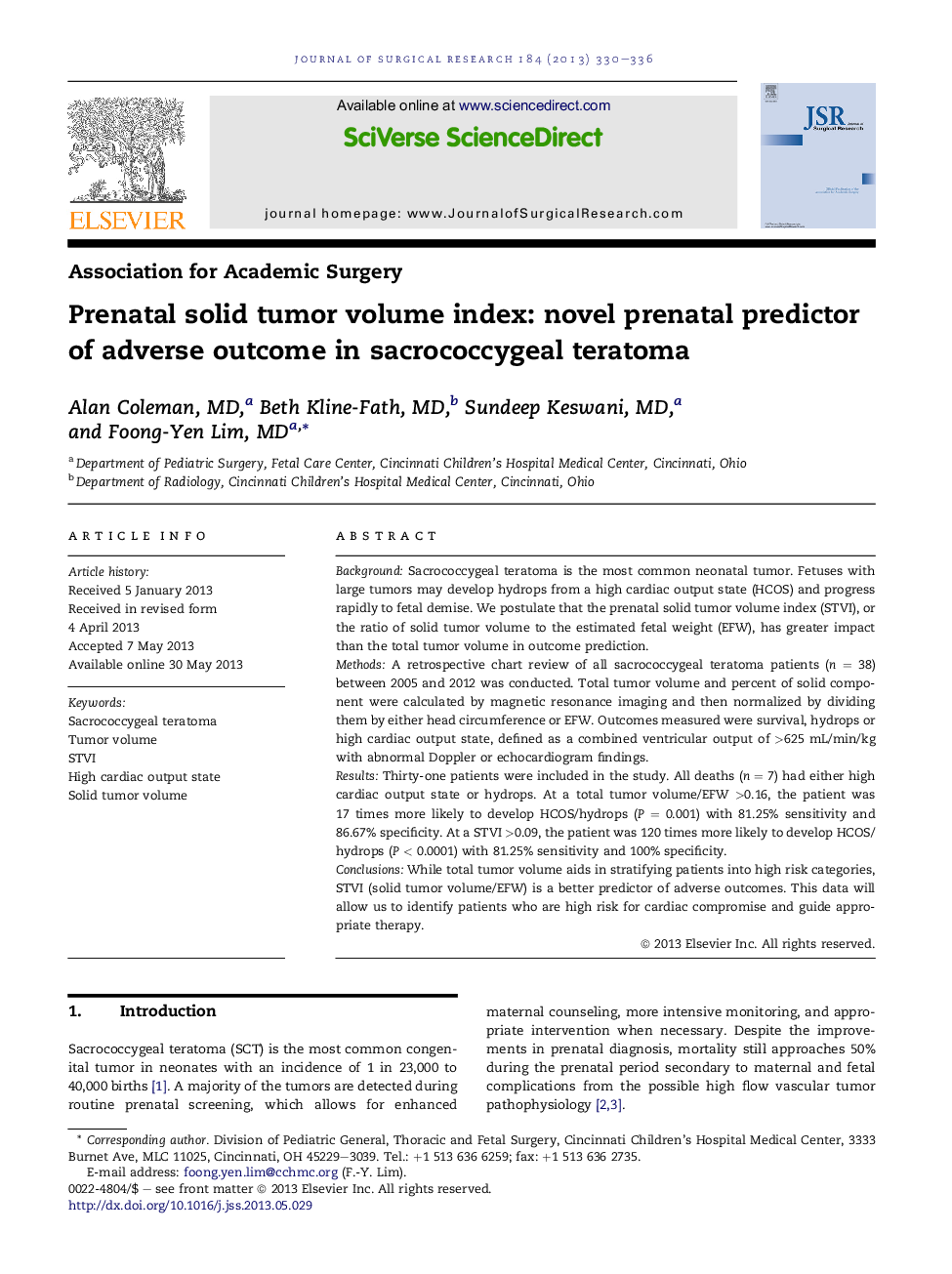| Article ID | Journal | Published Year | Pages | File Type |
|---|---|---|---|---|
| 4300613 | Journal of Surgical Research | 2013 | 7 Pages |
BackgroundSacrococcygeal teratoma is the most common neonatal tumor. Fetuses with large tumors may develop hydrops from a high cardiac output state (HCOS) and progress rapidly to fetal demise. We postulate that the prenatal solid tumor volume index (STVI), or the ratio of solid tumor volume to the estimated fetal weight (EFW), has greater impact than the total tumor volume in outcome prediction.MethodsA retrospective chart review of all sacrococcygeal teratoma patients (n = 38) between 2005 and 2012 was conducted. Total tumor volume and percent of solid component were calculated by magnetic resonance imaging and then normalized by dividing them by either head circumference or EFW. Outcomes measured were survival, hydrops or high cardiac output state, defined as a combined ventricular output of >625 mL/min/kg with abnormal Doppler or echocardiogram findings.ResultsThirty-one patients were included in the study. All deaths (n = 7) had either high cardiac output state or hydrops. At a total tumor volume/EFW >0.16, the patient was 17 times more likely to develop HCOS/hydrops (P = 0.001) with 81.25% sensitivity and 86.67% specificity. At a STVI >0.09, the patient was 120 times more likely to develop HCOS/hydrops (P < 0.0001) with 81.25% sensitivity and 100% specificity.ConclusionsWhile total tumor volume aids in stratifying patients into high risk categories, STVI (solid tumor volume/EFW) is a better predictor of adverse outcomes. This data will allow us to identify patients who are high risk for cardiac compromise and guide appropriate therapy.
